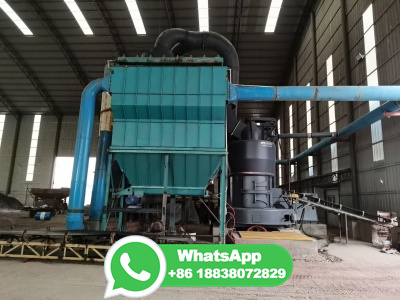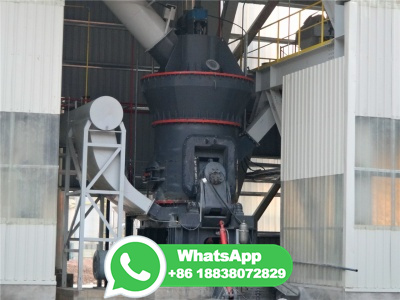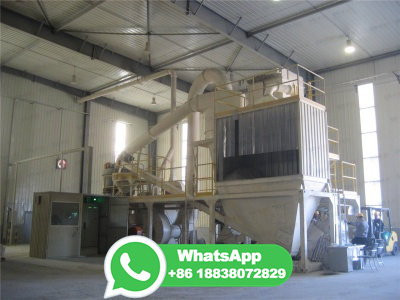
WEBCoal forms from the accumulation of plant debris in a swamp environment which is buried by sediments such as mud or sand and then compacted to form coal. Sandstone is a sedimentary rock which forms from cemented sandsized clasts. It forms when sand layers are buried under sediments of sand. Composition. Mineral Content.
WhatsApp: +86 18203695377
WEBJun 7, 2023 · Coal Geology. Coal is a combustible sedimentary rock formed from ancient vegetation which has been consolidated between other rock strata and transformed by the combined effects of microbial action, pressure and heat over a considerable time period. This process is commonly called 'coalifiion'. Coal occurs as layers or seams, ranging .
WhatsApp: +86 18203695377
WEBOct 19, 2023 · Coal, natural gas, and ... Formation of Petroleum The geological conditions that would eventually create petroleum formed millions of years ago, ... During this process, a well is intentionally drilled deeper than the oil reservoir. The deeper well hits a natural gas reservoir, and the highpressure gas rises, forcing the oil out of its ...
WhatsApp: +86 18203695377
WEBNov 18, 2019 · a, SO 4 2– production rates under NO x and SO 2 emission levels ranging from –20 ppb h – mirrored Sshaped curves are SO 4 2− formation isopleths and the numbers on them (for ...
WhatsApp: +86 18203695377
WEBApr 20, 2021 · Repeated amalgamation and dispersal of continents over Earth history is known as the supercontinent cycle; however, the geodynamic processes driving this cyclicity remain debated. This Review ...
WhatsApp: +86 18203695377
WEBJan 1, 2013 · The origin of coal lies in a set of circumstances that prevailed at the time of original peat swamp formation and subsequently during the process of coalifiion (maturing) through time, temperature and pressure. The lithology of coal as defined by the American Society for Testing and Materials (ASTM) is 'the term used to describe the .
WhatsApp: +86 18203695377
WEBThe formation of coal Place the following statements in order to describe the process of coal formation: Drag the text blocks below into their correct order: During the Carboniferous Period, plants and animals died. Coal was formed from the remains. They were covered with water and dirt and exposed to high pressure and heat.
WhatsApp: +86 18203695377
WEBJul 3, 2023 · The slow process by which the dead plants buried deep under the earth have become coal is called coal was formed from remains of plants therefore coal is called a fossil fuel. When heated in air,coal burns and produce,mainly carbon dioxide lot of heat energy is also produced during the burning of coal.
WhatsApp: +86 18203695377
WEBThe formation of coal took millions of years. Coal was formed by the bacterial decomposition of ancient vegetable matter hurried under successive layers of the earth. Under the action of high temperature and pressure and in the absence of air, the decayed vegetable matter converted into coal.
WhatsApp: +86 18203695377
WEBFeb 12, 2024 · Coal exploration is a very demanding task, highly dependent on geological and economic factors and the utilization of coal. This lecture text includes information on a variety of geological techniques used in the exploration of coal and coalbearing sequences, as well as on the calculation, assessment, classifiion, and reporting of .
WhatsApp: +86 18203695377
WEBThe temperature also rose as they sank deeper and deeper. Under high pressure and high temperature, dead plants got slowly converted to coal. The slow process by which the dead plants buried deep under the earth have become coal is called carbonisation. Since coal was formed from the remains of plants, therefore, coal is called a fossil fuel.
WhatsApp: +86 18203695377
WEBCoal is a combustible black or brownishblack sedimentary rock with a high amount of carbon and hydrocarbons. Coal is classified as a nonrenewable energy source because it takes millions of years to form. Coal contains the energy stored by plants that lived hundreds of millions of years ago in swampy forests. Layers of dirt and rock covered the ...
WhatsApp: +86 18203695377
WEBThe slow process by which the dead plants buried under the Earth have become coal is called as carbonisation. Since coal was formed from the remains of the plants, it is called a fossil fuel. Coal, which is mainly carbon, on heating produces mainly carbon dioxide gas and a lot of heat energy.
WhatsApp: +86 18203695377
WEBCoal comes from the remains of plants that existed millions of years ago. When these plants died, their remains were deposited on the ground and covered with dirt and mud. Over millions of years, the weight of the new soil that is formed over the deposits of peat (decomposed plants), causes the pressure and the heat to increase, this causes ...
WhatsApp: +86 18203695377
WEBJan 20, 2017 · Coal is the main energy source in China, accounting for about 70% of primary energy production and consumption 1, is also one of the most important energy sources in the world, and its ...
WhatsApp: +86 18203695377
WEBJun 1, 1989 · Peat is a predominantly organic material derived from plants that accumulates in certain types of ecosystems. Its formation is dependent on an excess of local plant productivity over the respi ratory processes of organisms. Such an imbalance may be more closely related to the retardation of microbial activity than to high productivity, hence ...
WhatsApp: +86 18203695377
WEBJul 16, 2018 · The formation of photochemical smog involves three primary ingredients: nitrogen oxides, hydrocarbons and sunlight. The nitrogen oxides and hydrocarbons are byproducts of fossil fuelburning energy plants, and they can even come from natural processes, but the main source is the internal combustion engines in gasolinepowered .
WhatsApp: +86 18203695377
WEB3 days ago · The time period during which the formation of coal took place from the decaying vegetation is called the carboniferous age, and the process is called carbonization. Coal Formation Stages. The formation of coal is a fourstage process, depending on the conditions to which the plant debris was subjected. More the heat and .
WhatsApp: +86 18203695377
WEBThe process of converting N 2 into biologically available nitrogen is called nitrogen fixation. N 2 gas is a very stable compound due to the strength of the triple bond between the nitrogen atoms ...
WhatsApp: +86 18203695377
WEBJul 21, 2023 · About 300 million years ago, there were dense forests in lowlying wetland areas on the earth. As the trees died, they got covered with sand and mud. More trees grew on this sand and mud. When these died, they too got covered. Sometimes earthquake and volcanoes buried entire forests deep down in the earth. The high temperature and high .
WhatsApp: +86 18203695377
WEBNov 1, 2022 · Coal mining may lead to ground subsidence in a long term and is widely distributed, which can cause environmental damage and other disasters. Predicting the dynamic process of ground subsidence in ...
WhatsApp: +86 18203695377
WEBNov 20, 2020 · Gas is stored in micropores on the coal surface in coalbed methane (CBM) reservoirs, mainly via adsorption 1, order to release CBM from the coal and produce gas through the cleat system, the ...
WhatsApp: +86 18203695377
WEBDescribe how water is an integral part of all sedimentary rock formation; ... The deposition order and saturation percentages are depicted in the table, bearing in mind the process in nature may vary from laboratory derived values. Mineral sequence ... Lush swamplands can create conditions conducive to coal formation.
WhatsApp: +86 18203695377
WEBPetroleum is a dark oily liquid. It is a mixture of various fractions. Petroleum is formed from the remains of tiny sea animals and plants that lived millions of years ago. As these organisms died, their bodies settled at the bottom of the sea and got covered with layers of sand and clay. Absence of air, high temperature and high pressure and action of micro .
WhatsApp: +86 18203695377
WEBSep 13, 2023 · In scenarios limiting warming to °C with no or limited overshoot, global coal, oil, and natural gas supply (intended for all uses) decline on average by 95%, 62%, and 42%, respectively, from ...
WhatsApp: +86 18203695377